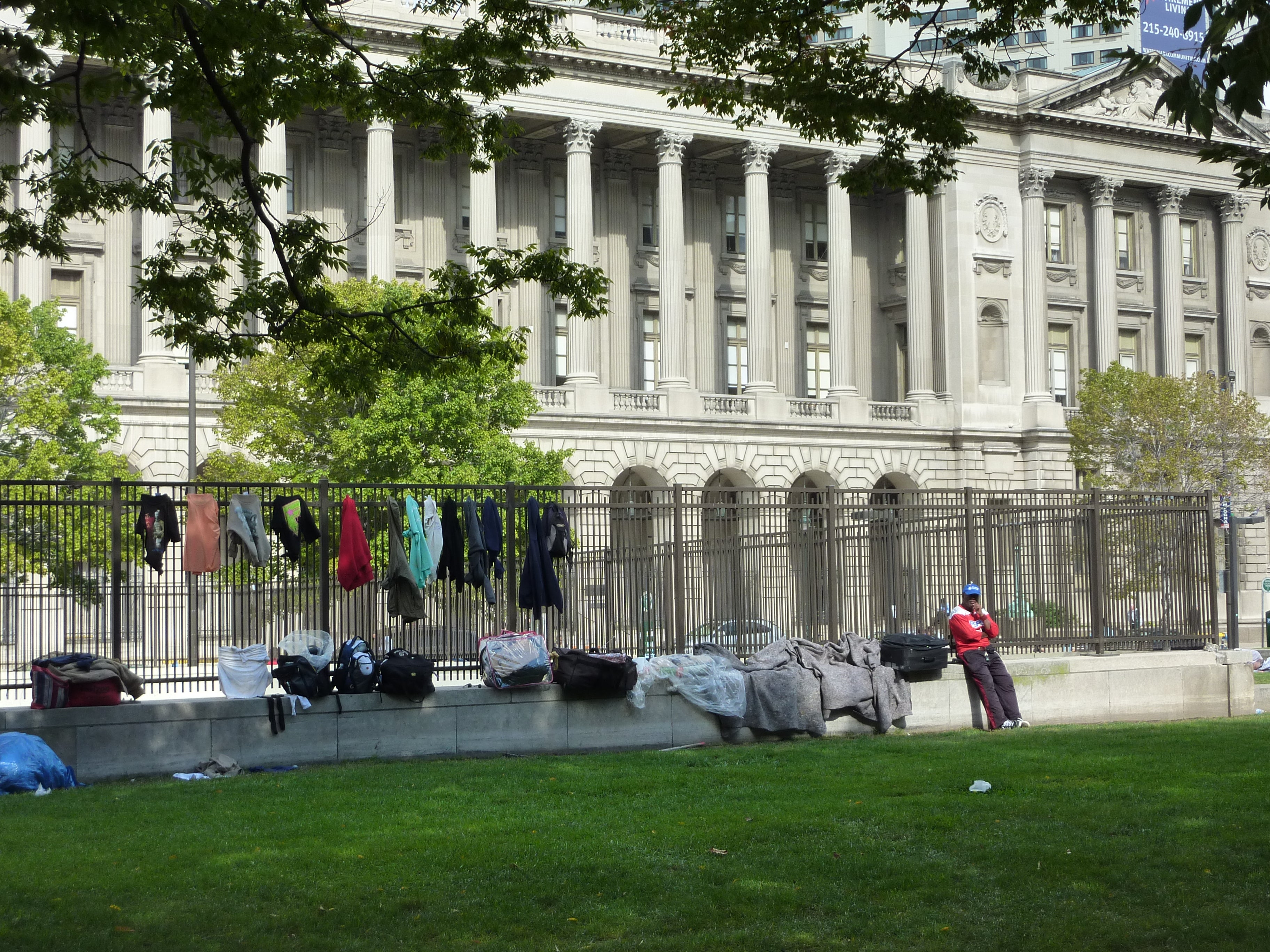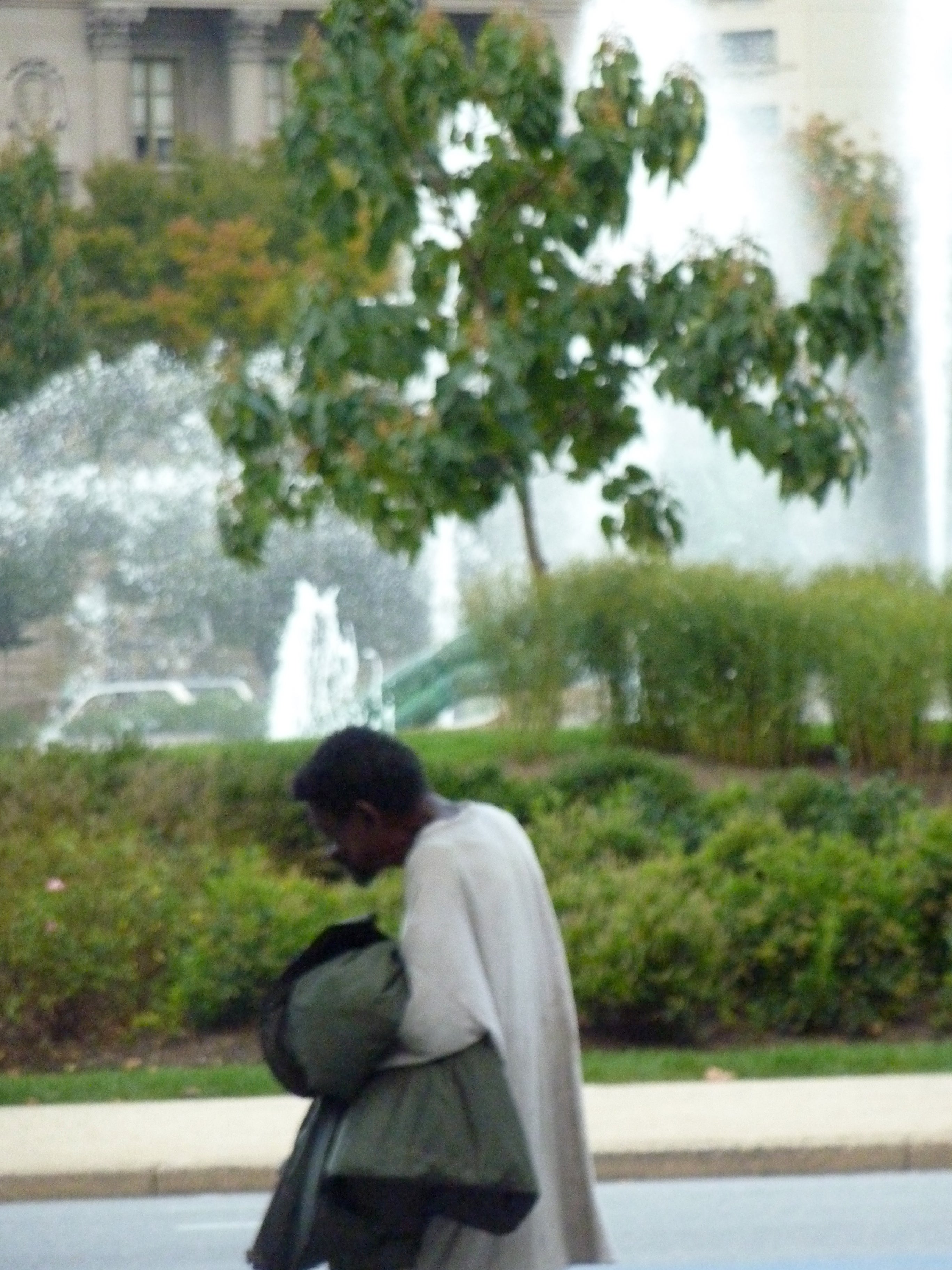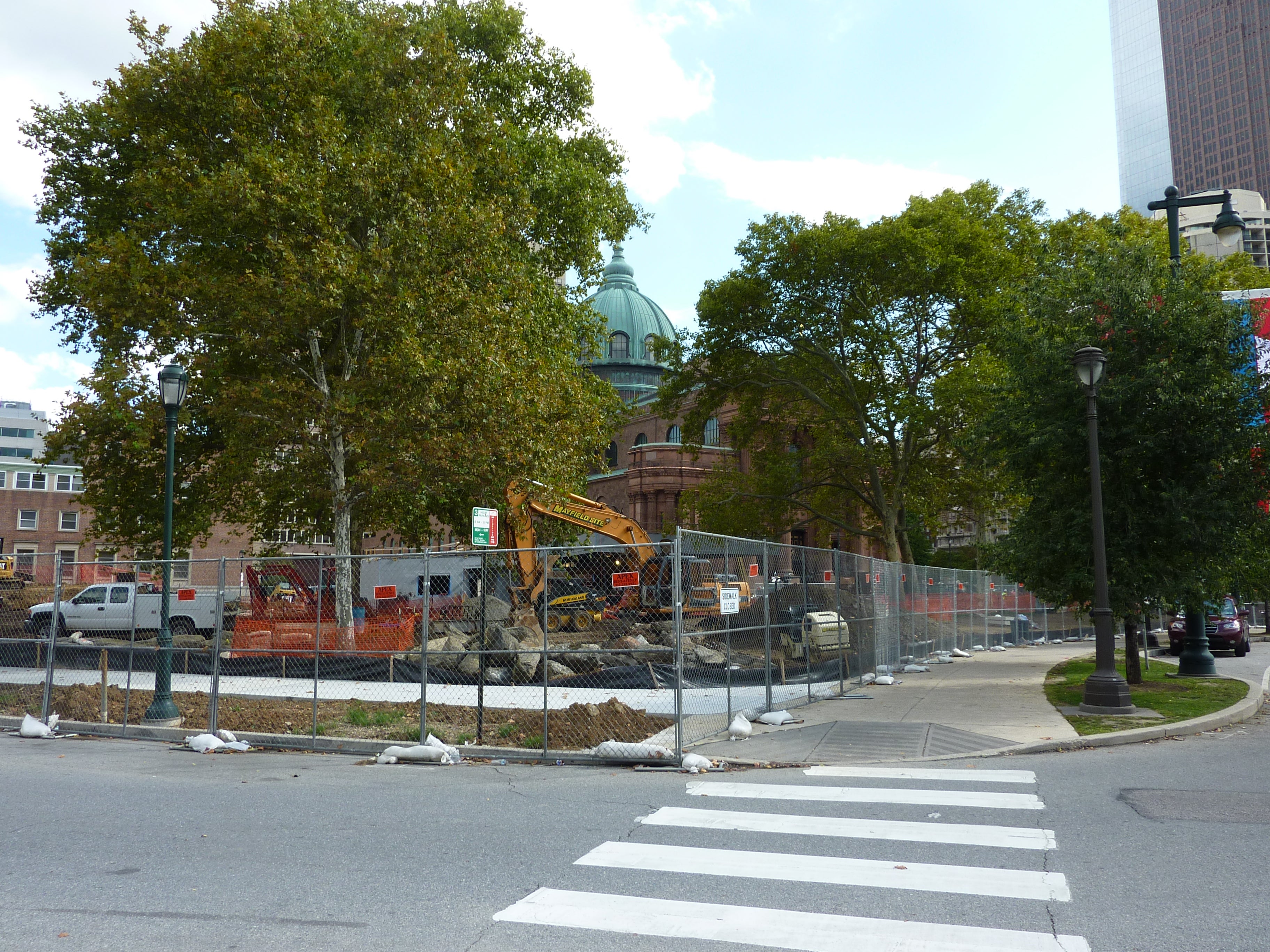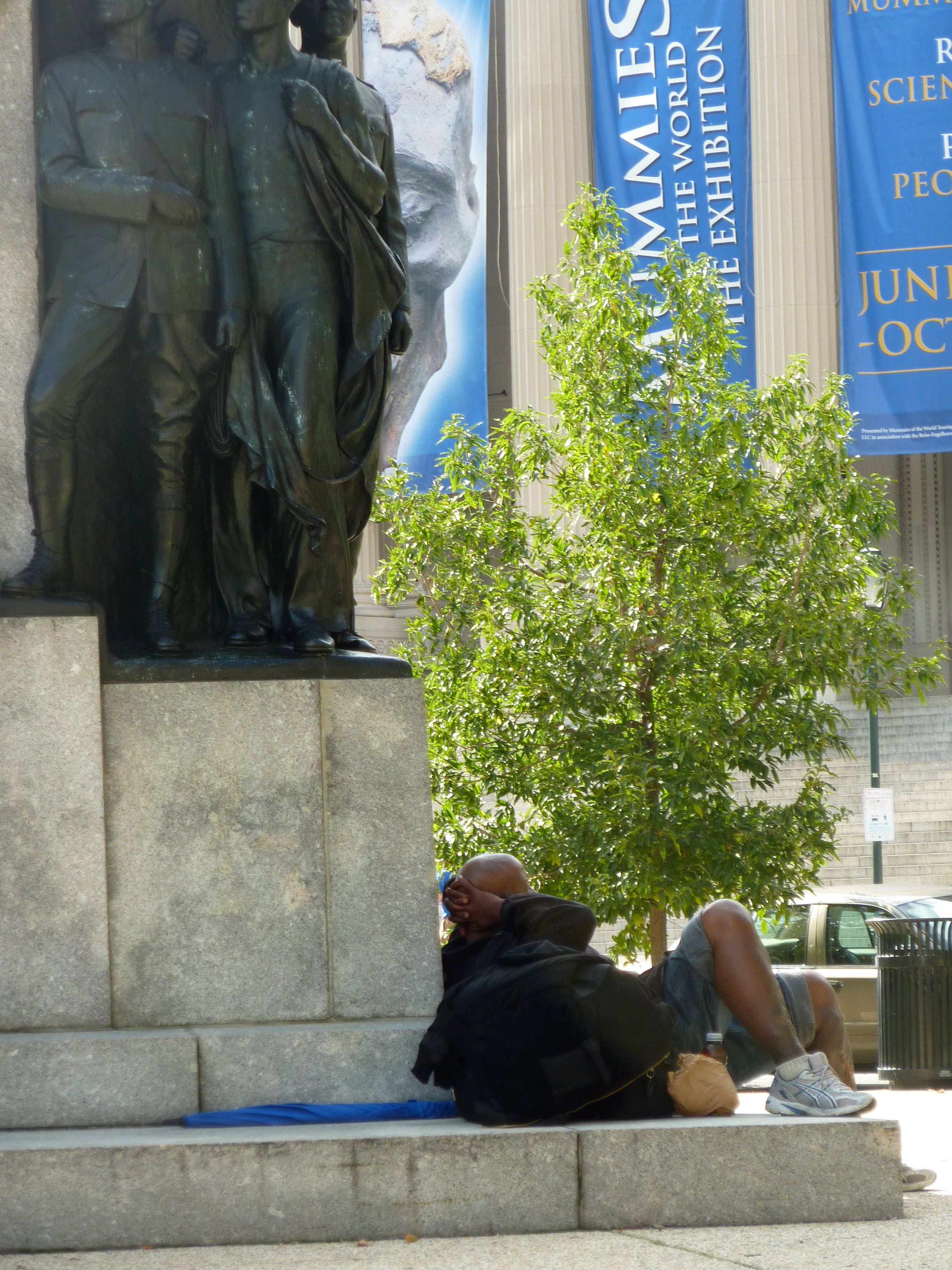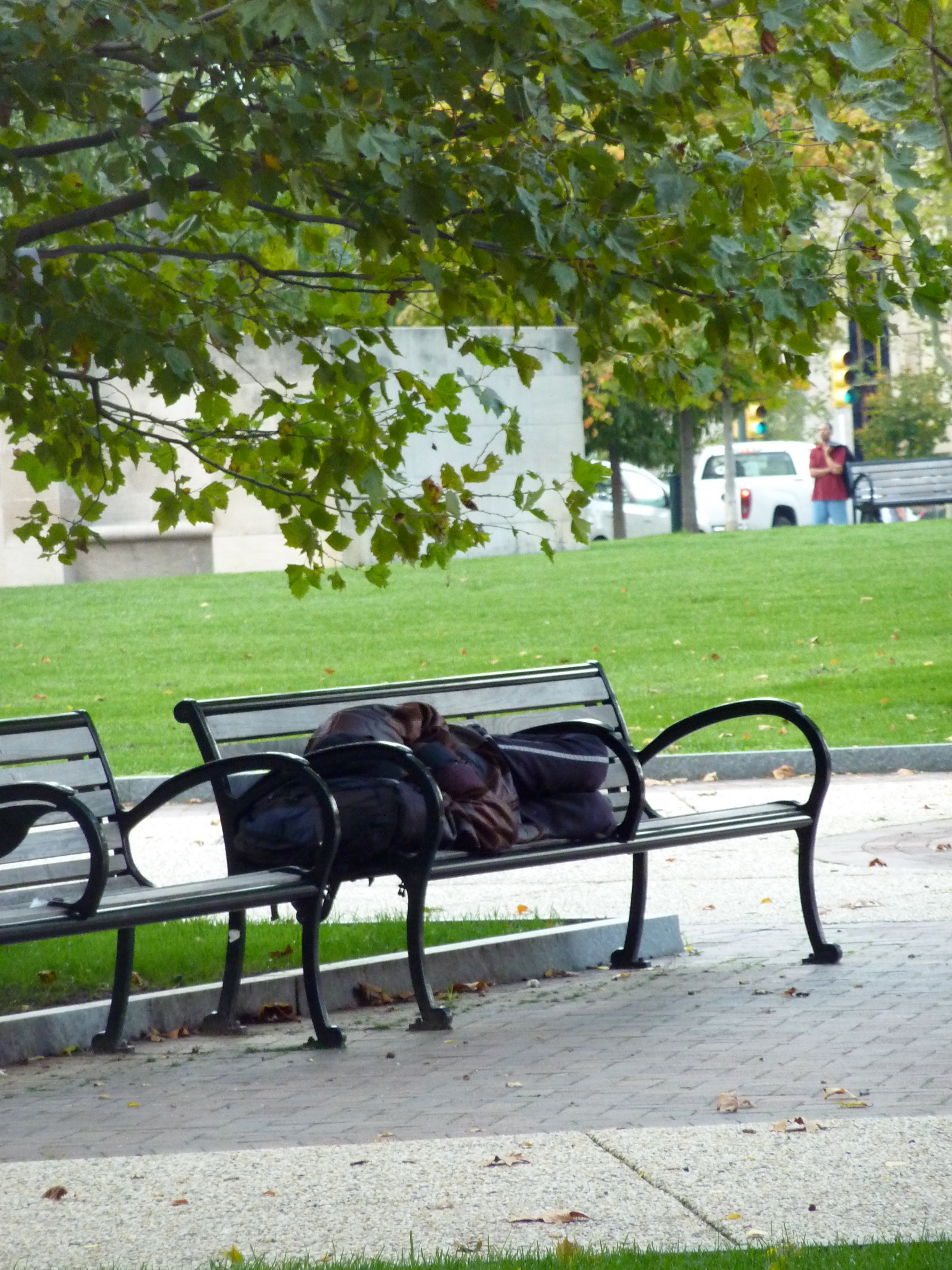As Parkway grows, so does its homeless problem
Sister Cities Park— under construction. Rodin Museum and Gardens — under construction. The Barnes Foundation — under construction. With these three huge projects underway, much of the eastern end of the Benjamin Franklin Parkway has been in disarray.
The end results promise to be extraordinary, of course. Meanwhile, however, the Parkway is experiencing unpleasant growing pains. For many, that’s best evidenced by the very obvious presence of the homeless, the addicted, and the otherwise down on their luck.
“This has been a constant issue for awhile now, and it flares on and off,” says Judi Rogers, executive director of the Parkway Council Foundation, a coalition of education and cultural institutions in and around the Parkway. “Unfortunately, we seem to be in a period where it’s flaring.”
The city is not unaware of the situation, says Dainette Mintz, director of the Office of Supportive Housing and Deputy Managing Director for Special Needs Housing. “When we knew there was going to be construction at the Barnes site, we worked very hard with Project H.O.M.E. to try and engage as many people as we could to seek shelter or treatment,” she says, adding that the majority of the 120 people who clustered along the wall of the Study Center were indeed attended to and placed in shelters.
Project H.O.M.E., a local organization that provides services to persons who experience chronic homelessness, estimates that there are about 4,000 persons who are homeless on any given day in Philadelphia. This includes only those who are in shelters or on the streets. It does not include those who are in transitional housing, low-demand residences, or in substandard/unfit living conditions.
`
According to Mintz, a new, and shifting, group of some 125 transients can be found along the Parkway these days (about a third of the total who have been counted in Center City). “People were scattered across several Parkway sites,” she says, “and now with all of the construction, they’ve claimed one place, Aviator Park, so it’s become much more obvious.”
Indeed, a recent meander through the park on a sunny day revealed about ten apparently homeless men positioned throughout the park, with one lone sandwich-eating office worker sitting in their midst.
The Council’s member institutions aren’t happy about the situation. “This is our primary cultural boulevard and many institutions have invested millions of dollars in enhancing it,” Rogers says. She says the Council has met with “multiple managing directors over the years, we’ve met with Mayor Nutter.” Although, she says, there’s been acknowledgment of the challenge, action has been slow in coming.
“The Parkway can’t be enjoyed to its optimum if it doesn’t feel clean and safe,” Rogers observes. “Trash is strewn everywhere, and the Parkway often becomes a public restroom.
The problem is compounded by the “well-meaning religious, school, and community groups that are coming and feeding people,” says Paul Levy, executive director of the Center City District. “There’s a consensus that the need is paramount — but to simply provide it in a public environment doesn’t help the process.” Bringing food without health permits or attendant toilet facilities only flies in the face of the steady work offered by the city’s established support groups, Levy adds.
“We understand the desire to help, but we’d like to see it approached a bit differently,” seconds Mintz. Both she and Levy cite the “housing first” model as one that works. This national program, created by the New York City-based Pathways to Housing in 1992 emphasizes providing shelter before addressing supportive treatment services, a move that many believe can get resistant populations off of the streets quickly and effectively.
Mintz says that an additional 50 such units are “coming online” in the near future and that social workers are in the process of trying to figure out how many of the Parkway homeless are on the waiting list for such services. This is especially imperative, she adds, as cold weather starts to set in.
Meanwhile, Levy and Rogers say that stricter enforcement of the Fairmount Park 1 a.m. curfew (its rules and regulations state that “permits are required if you’re in the Park after the 1:00 a.m. curfew”) would help. “The Street administration directed the police not to enforce this regulation,” says Levy, “and that policy has been allowed to carry over.”
Mintz was not willing to state whether there are any plans from on high to change this, saying only that “in the early morning, police will try to get folks who have reclined there overnight to move along. We’re always trying to address this. It all comes down to folks’ (the homeless and addicted) willingness to change their situation and our ability to accommodate them.”
Mark Focht, first deputy commissioner of Fairmount Park, says that the “challenge with the Parkway is that it’s a road. It’s technically difficult to observe rules governing closure when there’s no gate.”
To those working to improve the Parkway’s physical assets, the situation remains frustrating. “We’ve got one set of federal and city and foundation money working around the goal of animating and activating the Parkway and we have some carry over policies that are hindering that effort,” says Levy. “There’s no reason why the city can’t balance the objectives of compassion and services with the recognition that to be successful as a city we also need quality attractive and safe public spaces.”
Contact the reporter at jgreco@planphilly.com and follow her on Twitter @joanngreco
WHYY is your source for fact-based, in-depth journalism and information. As a nonprofit organization, we rely on financial support from readers like you. Please give today.



